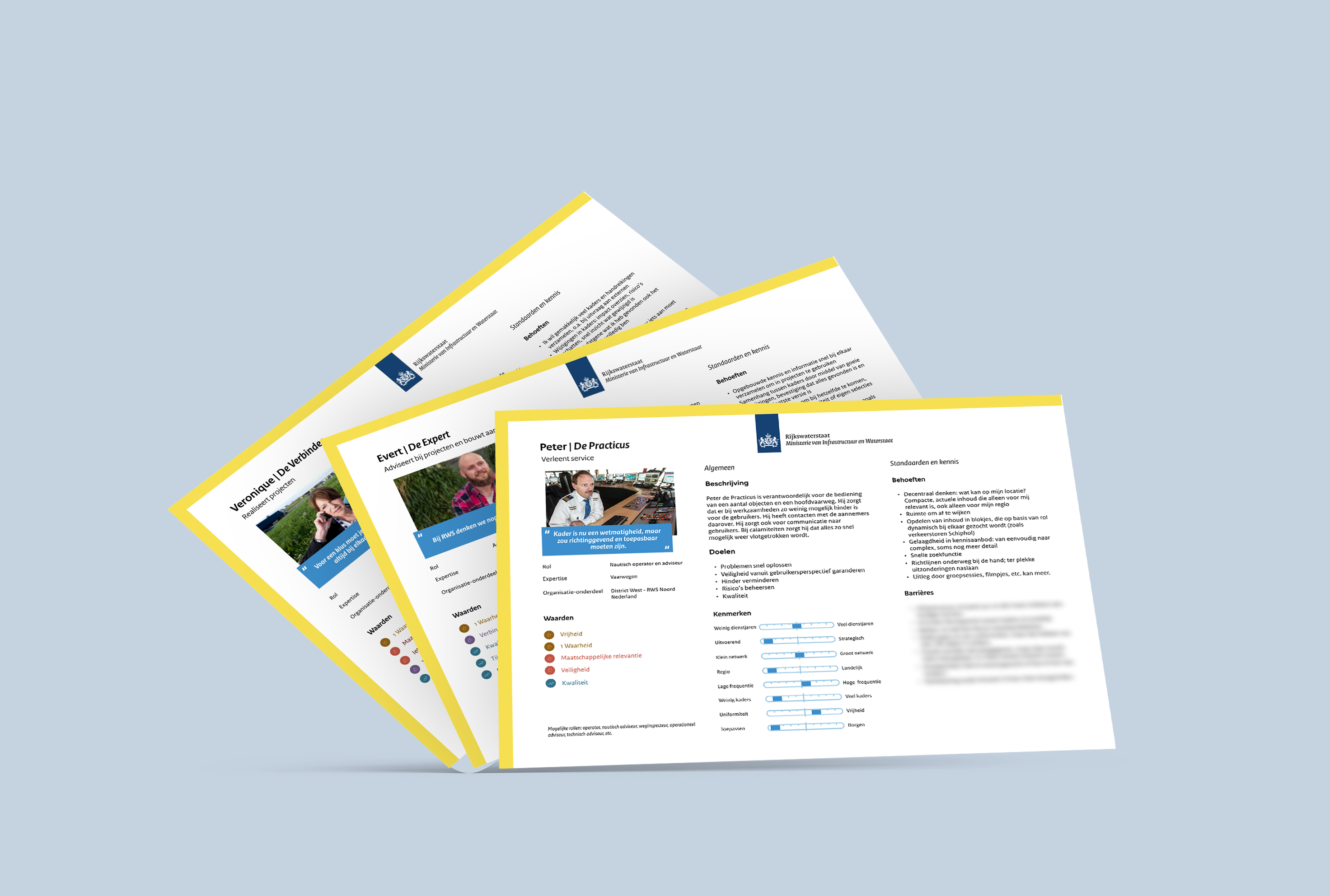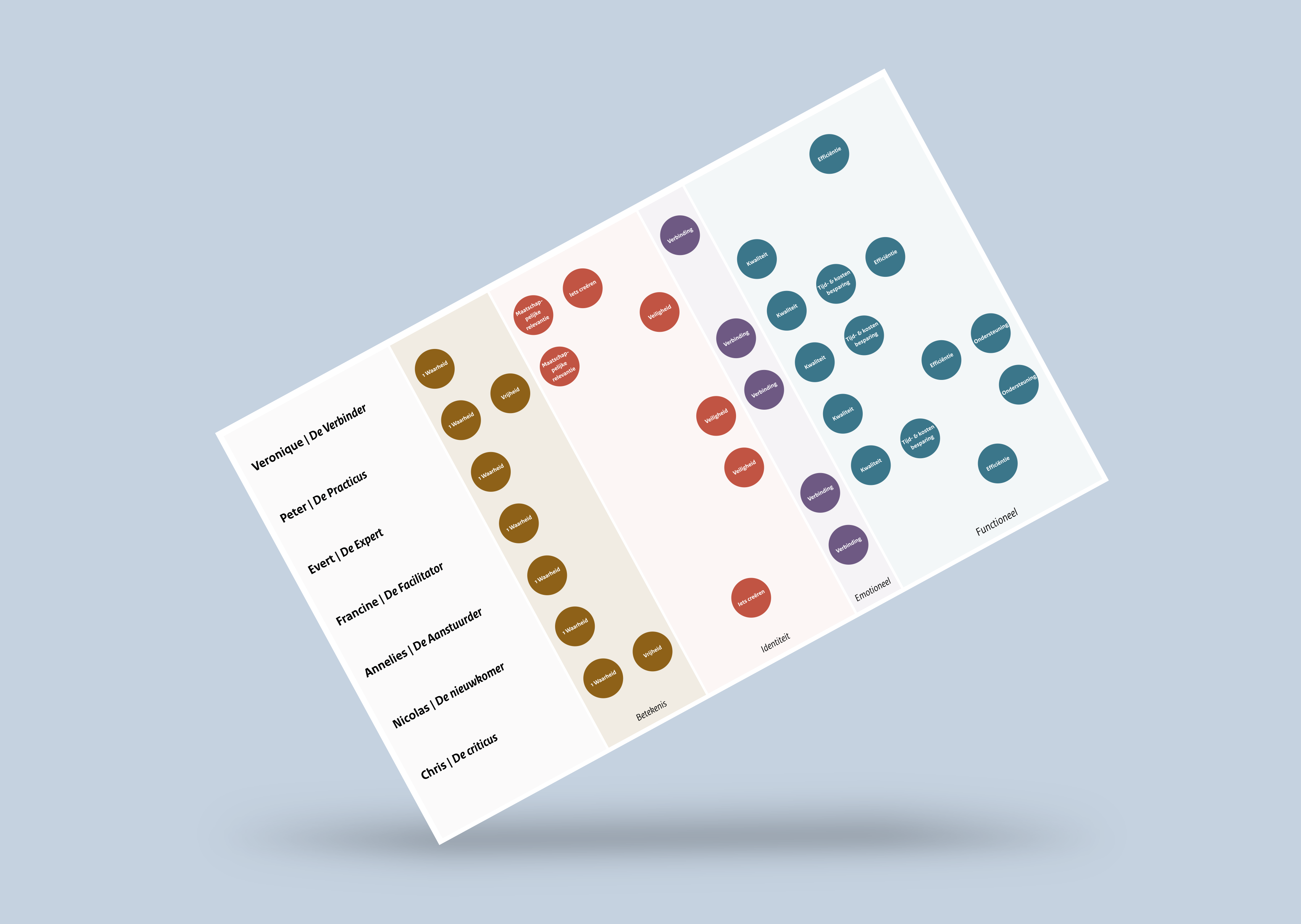Rijkswaterstaat
What does the bridge keeper want?

What do our people want?
"Which groups of users of standards and knowledge can be distinguished and what are their needs?" This was the question with which Rijkswaterstaat came to us. Rijkwaterstaat is an implementation organisation with more than 10,000 employees in a wide range of roles spread over national and regional organisational units. Some of the employees work in the office, others have their feet in the clay to keep the Netherlands running. All passionate employees with a lot of knowledge and where knowledge plays a major role in the work. A challenge here: how do you establish knowledge and standards and transfer them? How should the road inspector act with an animal on the highway, what are the frameworks for a project manager when renovating a tunnel, what are guidelines for the sustainability consultant, etc.?
RWS mainly wants to gain more insight into the needs of these people in the field when applying standards and knowledge. The insights from the research are recorded in personas: fictitious, but as much as possible truthful descriptions of users, with an overview of their most important characteristics, goals, needs, barriers they encounter and how they circumvent them. The personas serve as a basis for improving the knowledge accessibility for the various user groups. Important values of the different user groups have also been established. What is really essential to their work, what are their starting points?
"For example, when building a bridge, there are 300 requirements, so you want to be able to make a selection."*
Persona Evert de Expert
Bundling many voices
The research was done on the basis of qualitative research; a combination of workshops and in-depth interviews. Initially with 'fixers' of the standards and later with the 'applicators' in the field. About 40 interviews were conducted that yielded many different insights. The trick is to bundle that in a good way. This was done by drawing up personas in three groups in which different roles in the organization are combined. The primary personas represent the most important roles in the execution of the work at RWS:
- 'The Connector', like a project manager.
- 'The Practicus', such as a nautical operator or road inspector.
- 'The Expert: advisors in various fields, like sustainability.
The second group of personas is organized along other axes:
- 'The Newcomer': has been employed for a short time and is still building up a network to gain knowledge.
- 'The Critic': critical about the form of standards and knowledge.
And finally personas with a supporting role:
- 'The Driver': not a user himself, but manages the budgets and is responsible for working according to standards.
- 'The Facilitator': organizes and facilitates the recording of knowledge.
The set of personas is a representative reflection of the user population within RWS.

Values and principles
Values form the basis for design decisions. In this research for RWS, the values of the people who draw up the standards were compared with the values of the users in the field. There were similarities and differences. For example, all groups find 'One truth' important, that they can quickly find the right information relevant to their work. 'Connection' is also a great common denominator, both between people and between content. For the setters of standards, 'Time and cost savings' are an important driver. However, the people in the field place more emphasis on 'Social relevance' and 'Creating something'. For optimal connection with the users in the field, it will help to align (design) choices with their values and principles.

Application
The personas provide a vivid picture of user needs for the future, but also the limitations they face in the current situation. The personas are used to bring in the user perspective for new systems to be developed, for example in workshops on requirements and functionality for a new knowledge platform. Because they are representations of real employees, the user perspective really comes to life, which greatly increases the chance that the design and functionality of systems match the user's wishes.
Also want to visualize the needs of employees?

Marcel Kosters
Business director